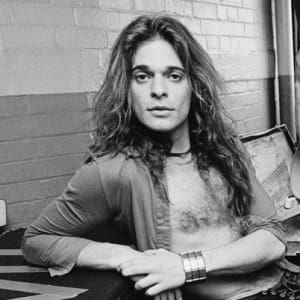
Tintoretto
Tintoretto is considered one of the greatest Venetian painters of 16th century Italy.
Synopsis
Tintoretto was born Jacopo Robusti in Venice, Italy, circa 1518. His career as a professional artist ran from the 1530s until his death in 1594. He became known as one of the 16th century's masters of Venetian painting. His style was dramatic and innovative, and his oeuvre includes many religious scenes commissioned by churches and civic buildings, as well as mythological scenes and portraits of Venice's elite. Some of Tintoretto's best-known works are "The Last Supper" of 1594, "Saint Mark Rescuing the Slave," "Susanna and the Elders," and his cycles for the Scuola Grande di San Rocco and the Doge's Palace.
Background and Early Career
Little is known of Tintoretto's early life. He was born Jacopo Robusti in Venice, Italy, circa 1518. His father, Giovanni Battista Robusti, was a cloth-dyer, hence his nickname Tintoretto, which means "little dyer." According to some later accounts, Tintoretto apprenticed with master painter Titian. It may be more likely that he trained in the workshop of a lesser-known artist, however.
Despite the lack of information about Tintoretto's childhood and education, it is clear that he was aware of the work of Venice's prominent painters, as well as other Italian masters, by the time he was a young man. Throughout much of his career, Tintoretto sought to combine Michelangelo's drawing style with Titian's use of color while developing his own style.
A Venetian Master
Tintoretto was working as an independent professional artist by 1539. He remained in Venice throughout his career, becoming one of the city's most famous painters of the 16th century. Most of his work was oil painting, and he received many commissions for church altarpieces, large-scale paintings for civic buildings, and portraits of Venetian noblemen and statesmen.
One painting that helped make Tintoretto famous was "Saint Mark Rescuing the Slave" (also known as "The Miracle of the Slave"), which the artist painted in 1548, at the age of 30. As he became well-known throughout Venice, Tintoretto created dozens of large paintings of religious subjects, including "The Miracle of the Loaves and Fishes" (1545-50) and "Susanna and the Elders" (1555-56). Throughout the 1550s, he worked on a cycle of biblical scenes for the church of Madonna dell'Orto, including "The Worship of the Golden Calf."
Tintoretto used loose brushwork and rich, glowing colors (especially reds, golds and greens) in his paintings, which were distinctive for their theatricality. His figures are usually shown in motion, and his compositions make use of opposing forces within a deep pictorial space. In order to plan his complex scenes of many figures, Tintoretto prepared by making small model stages, which he would set up with small wax or clay figures in order to plot his arrangements and observe the effects of light and shadow.
Tintoretto is often associated with Mannerism, an artistic style from the late Renaissance that makes use of strongly dramatic subjects and depicts human figures in exaggerated proportions and poses. Contrastly, however, Tintoretto's individualistic style also sets him apart from that movement.
Later Career
Tintoretto was especially productive during the final two decades of his life. His paintings became darker and more mysterious: for example, in his masterpiece The Last Supper for the church of San Giorgio Maggiore (1594), Christ and the apostles gather around a table that recedes into a deep, shadowy interior space.
Tintoretto's other major commissions from the mid-1570s onward include a cycle of religious paintings for the confraternity building of the Scuola Grande di San Rocco, on which he worked from 1575 through 1588, comprised of Old Testament scenes and episodes from the life of Christ, including a large "Crucifixion." He also executed a sequence of mythological paintings for the redecoration of the Doge's Palace.
Tintoretto died in Venice on May 31, 1594. He and his wife, Faustina Episcopi, had eight children; three of them had trained with their father and carried on his artistic legacy.




